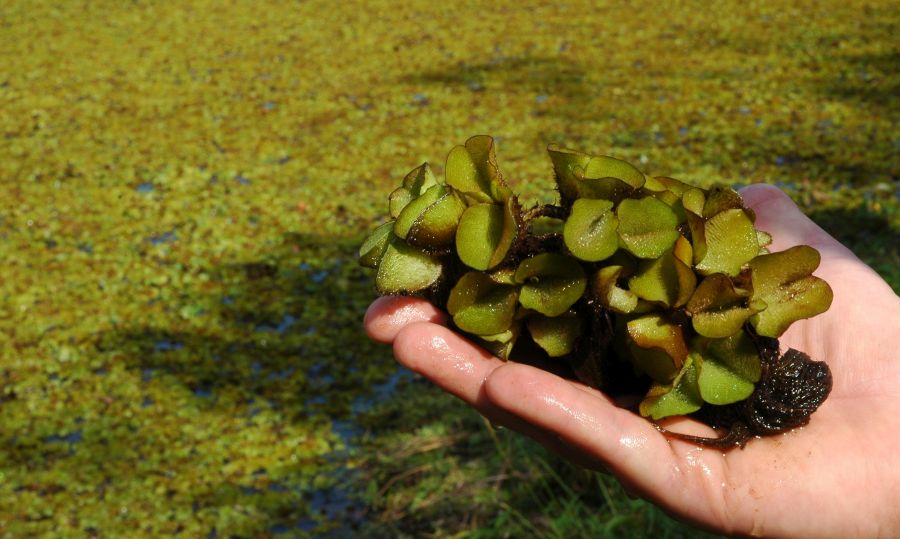
Source: AgriLife Today | Sept. 25, 2020
The Texas Parks and Wildlife Department (TPWD) confirmed the resurgence of giant salvinia on Lake Athens and Lake Gilmer following surveys on each waterbody.
“The return of giant salvinia to these lakes is disappointing but not surprising,” said John Findeisen, leader for TPWD’s team monitoring and treating problematic aquatic vegetation like giant salvinia. “The relatively warm winter and prime growing conditions this spring and summer contributed to the rapid expansion of giant salvinia in lakes where salvinia has been present. This results in giant salvinia being able hitch hike on boats, trailers, and other equipment from heavily infested lakes to other lakes.”
Lake Athens was surveyed on Sept. 16 and all giant salvinia found during the survey was treated. On Lake Gilmer, the invasive giant salvinia was discovered at the boat ramp and removed by hand. The lake was surveyed by boat, but no additional plants were found. Later this week, a more comprehensive survey of Lake Gilmer will be conducted.
“With giant salvinia only being found at the boat ramp, it’s easy to conclude the introduction was likely from a vessel transporting the plant,” said Findeisen.
Giant salvinia, a highly invasive, free-floating aquatic fern that can double in size in less than a week under ideal growing conditions, is a major threat to aquatic ecosystems in Texas. The invasive plant produces thick mats, making fishing, boating, swimming and other water recreation nearly impossible. Giant salvinia recently began limiting angling or boating access on the upper end of Lake Sam Rayburn and Lake O’ the Pines, as well as on other reservoirs. This increases the chance of plants hitchhiking from one lake to another on a boat, trailer or other equipment.
Boaters need to remove all plants, mud and debris from boats, trailers, vehicles and gear, and drain the water from all equipment and on-board receptacles before leaving the lake to prevent giant salvinia and other invasive species from spreading. Boats and trailers should also be dried completely before visiting another lake, preferably for at least a week. Washing the boat and compartments, using a carwash or other thorough cleaning method, can help to reduce the risk of spreading aquatic invasive species if drying as priorly recommended is not possible.
On top of the harm these organisms can cause to aquatic ecosystems and the recreational experience at lakes, the transport of aquatic invasive species can result in legal trouble for boaters. Transporting prohibited invasive species in Texas is illegal and punishable with a fine of up to $500 per violation. Boaters are also required to drain all water from their boat and onboard receptacles, including bait buckets, before leaving or approaching a public body of fresh water.
For more information on how to properly clean, drain and dry boats and equipment, visit the TPWD YouTube channel for a short instructional video. To learn more about giant salvinia, zebra mussels and other invasive species in Texas, visit tpwd.texas.gov/StopInvasives.
TPWD and partners monitor for invasive species in Texas lakes, but anyone who finds them in lakes where they haven’t been found before or who spots them on boats, trailers or equipment that is being moved should help identify and prevent new introductions by reporting the sighting to TPWD at (512) 389-4848 or by emailing photos and location information to [email protected].
